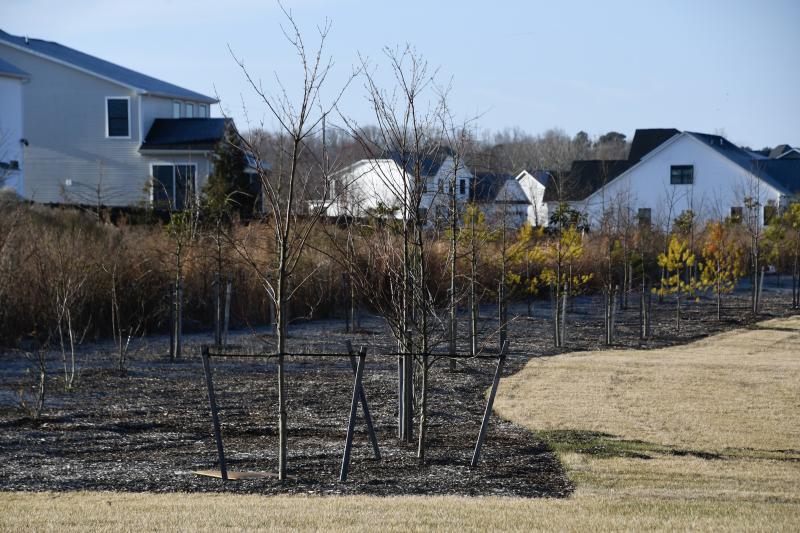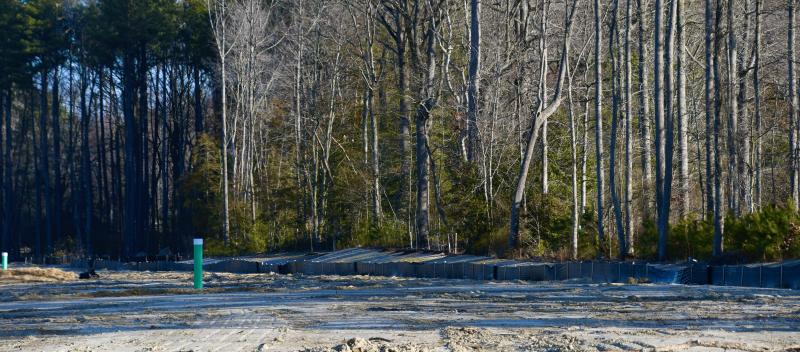Perimeter buffers in Sussex council’s sights
Sussex County Council has moved closer to drafting a new perimeter buffer ordinance. At its Feb. 20 meeting, by consensus, council approved a recommended proposal as a road map for legal staff to draft an ordinance.
County Administrator Todd Lawson said perimeter buffers were selected as council’s top priority following a Sept. 21, 2023, joint workshop with the Sussex County Planning & Zoning Commission.
He said the proposal includes feedback and direction from the public and stakeholders, and county council and planning & zoning commission members.
Assistant county attorney Vince Robertson said he would come to a future meeting with a draft ordinance for council to introduce. Once that occurs, public hearings can be scheduled.
New protection area
Among the proposed changes is a requirement that existing wooded buffers must be 30 feet wide with a 20-foot buffer protection area. In addition, both areas must be fenced off during construction to ensure they are not disturbed.
“We are building in incentives to make sure woodlands [in buffers] remain,” Lawson said. “We also are aiming to keep heavy equipment out of the buffer area. If passed, there are incentives not to knock down trees, which is something we don’t have now.”
Also, buffers must be in place prior to the first residential building permit but can be done in phases, Lawson said.
A performance bond or other guarantee to cover the perimeter buffer in the amount of 125% or $50,000, whichever is greater, of the cost of installation and value of replacement plantings would be required. Guarantees for the buffers (existing or planted) will be in place for two years. The developer would be responsible for the health of the buffer during that time period.
The proposed ordinance also contains regulations relating to cleared woodlands within five years of a land-use application.
Penalties for violations
The county is also proposing stricter penalties for developers or property owners who clear-cut woodlands and do not leave a buffer.
Lawson said the goal of the ordinance is to get developers or landowners to leave a 30-foot wooded buffer around their property when other trees are cut down to make way for site and infrastructure work.
If a wooded buffer is cut down anytime within five years of an application being filed, the developer or property owner would be required to plant back a buffer that is two times the size of the cleared area or 50 trees per acre. At no time would a buffer be less than 30 feet.
A developer could choose to replant trees on another nearby property if approved by the planning & zoning commission. The replanted area must be two times the size of the cleared area.
In addition, for violations of the ordinance made by the landowner, developer or property owner, a fine of $10,000 per quarter-acre of disturbance to the buffer or protection area may be imposed.
A tree mitigation plan for the disturbed area is required.
All building and zoning permits and inspections will be held until the tree mitigation is complete and approved by the planning & zoning commission.
Proposed standards
Perimeter buffers are required to be at least 30 feet wide, planted with native or local trees and shrubs.
Plantings must be to American National Standards Institute values: 70% deciduous; 30% evergreens; and 15 trees per 100 feet.
Trees and shrubs must be at least 6 feet tall at time of planting and obtain a minimum height of 10 feet.
A buffer can include existing trees and planted trees.
Permanent signage must mark the buffer.
All buffers, replanted or existing, must have a two-year guarantee.
Resource buffers of 50 feet take precedence.
There are different regulations for buffers using existing woodlands and those without woodlands.
On parcels with existing woodlands - A forest assessment must be completed by a certified professional.
The woodlands must be shown on the site and landscape plans.
In addition to the 30-foot buffer, a 20-foot perimeter buffer protection area must be in place.
Both buffers must be fenced off and marked during construction.
Walking trails are permitted.
Removal of invasive species and dead trees is permitted.
Any removal of damaged trees within the wooded buffer is subject to a mitigation plan.
The woodlands is forbidden to be cleared or graded.
On parcels without woodlands, the newly planted buffer must be fenced off during construction and the developer must comply with perimeter buffer standards and a landscape plan.
Tree mitigation will be required when the perimeter buffer or protection area or existing woodlands is damaged without authorization.
A mitigation plan must be developed by a licensed professional.
Tree replacement will be at the rate of three trees for every one tree
For more information, go to https://sussexcountyde.gov/sites/default/files/PDFs/County%20Council%20Presentation%20-%20Perimeter%20Buffer%20-%202.20.2024.pdf or https://sussexcountyde.gov/sites/default/files/PDFs/Perimeter%20Buffer%20Update%20-%20Ordinance%20Topics%20-%202.20.2024.pdf.

























































